This list of Brazil facts will blow your mind!
A country of continental proportions, Brazil is a charismatic place, and there are tons of reasons to visit it.
Being Brazilian, I know a thing or two about my country, so I thought I’d share some interesting facts about Brazil with all of you.
I know that the majority of my readers are international, so perhaps you’d like to know a few more things about my home.
In this article, I’ll talk about interesting Brazilian facts, weird/cool information about Brazil, the most famous Brazilians, and lots of random facts about Brazil. Yes, it’s all about Brazil here.
Brazil facts
Brazil is part of South America, and most of its territory is located in the southern hemisphere, just a small part of the country is in the northern hemisphere.
Most of Brazil is sparsely populated with a population density of 62 people per square mile (25 people per square km).
For reference, the United States has approximately 93 people per square mile (35 people per square km).
Not enough time to read this article in one sitting? Then save it for later!
General facts about Brazil
- Name: Federative Republic of Brazil
- States: 26
- Language: Portuguese
- Population: 209.3 million (2017)
- Largest city: São Paulo
- Currency: Brazilian Real (BRL or R$). US$1 = approx R$4
- National day: September 7th
- National anthem: National Anthem of Brazil by Francisco Manuel da Silva
- Dialing code: +55
- Time zones: Fernando de Noronha (GMT-2), Brasilia (GMT-3), Amazon (GMT-4), and Acre (GMT-5)
- Voltage: 127v and 220v
- Power plug type: N (two pins and a grounding pin)
- Official website: www.gov.br/
- Brazilian life expectancy: 75 years
Biggest cities in Brazil
- São Paulo
- Rio de Janeiro
- Brasília
- Salvador
- Fortaleza
- Belo Horizonte
- Manaus
- Curitiba
- Recife
- Porto Alegre
Brazil map
This is the map of Brazil divided by states.
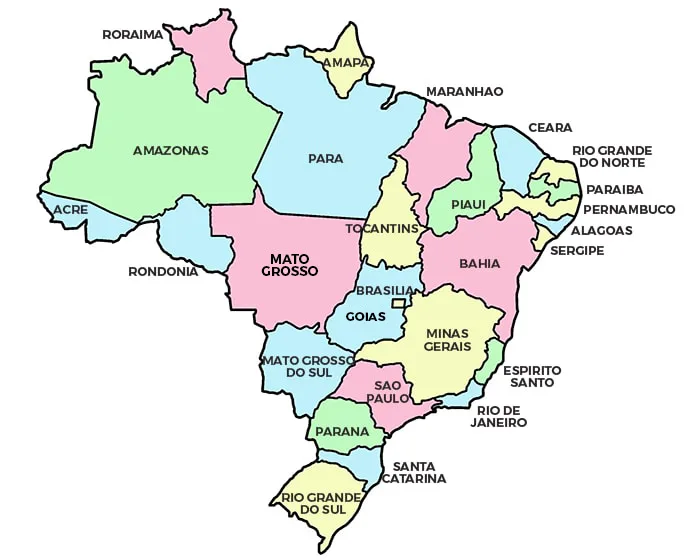
Brazil flag
The flag of Brazil is full of meanings, from its colors to its stars. Learn more about Brazil’s flag here.
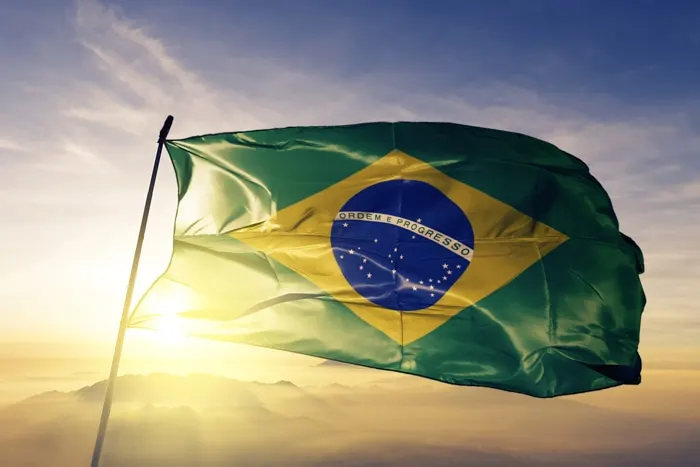
Brazilian geography
Brazil is mostly a tropical country that has many geographical features in its territory, from desert to rainforest and mountain.
The highest mountain in Brazil is Neblina Peak, reaching 9,822 ft (2.994 m). This massive Brazil fact (pun intended) is a blast for adventure and hike lovers.
That’s because Neblina Peak is a unique and challenging hike that takes you to the limit before even you get to the mountain.
The whole trip includes a boat, 4×4 jeep, and trekking through the jungle to reach Brazil’s highest point. Totally worth it.
And while Brazil has many modern cities, colonial towns, pristine beaches, and breathtaking mountains, the second-most visited place in the country is the Iguazu Falls.
The entrance gate for most visitors is Rio de Janeiro, of course.
As for its borders, Brazil borders all countries in South America, except Chile and Ecuador.
Brazil number ones
São Paulo is the largest city in the southern hemisphere
Brazil’s vibrant financial center, São Paulo metropolitan area, has about 21 million residents, while the city has approximately 12 million.
No wonder people call it the New York of South America. São Paulo is a massive city.
Brazil has more animal and plant species than any other country in the world
There’s a consensus in the biology world that Brazil is the most biodiverse country on the planet and rightly so because Brazil has the most known plants, amphibians, freshwater fish, and mammals.
Brazil has two biodiversity hotspots (the Atlantic Forest and savanna, known as cerrado), six terrestrial biomes, and three large marine ecosystems.
At least 103,870 animal species and 43,020 plant species are currently known in the country, comprising 70% of the world’s cataloged animal and plant species, according to Biofin.
Brazil has been the largest producer of coffee for the last 150 years
If you’re a coffee drinker, odds are you drank Brazilian coffee this year.
That’s because Brazil is by far the world’s largest producer and exporter of coffee, accounting for 30% of the world’s production.
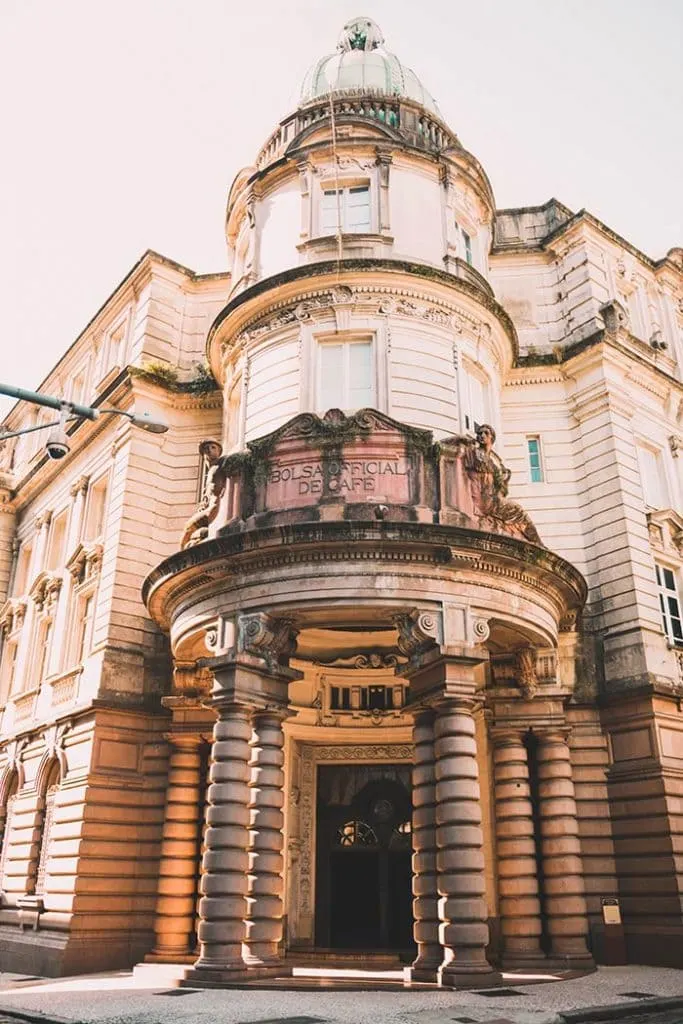
Brazil is massive
Brazil is the fifth most significant and most populated country in the world. In relative terms, Europe is slightly larger than Brazil, making it the largest country in South America.
Brazil is not only enormous, but it also boasts about two-thirds of the Amazon Rainforest. Although this is a fact about Brazil to be proud of, the government is doing little to nothing to preserve it.
Amazon, on the other hand, is the largest rainforest, and the place still has the world’s largest river in volume.
While Amazon is a unique place on earth, the world’s largest swamp is also in Brazil. The Pantanal is an “up and coming” tourist destination in the last five years.
Famous Brazilians
- Athletes: Ronaldo, Anderson Silva, Neymar, and Felipe Massa.
- Top models: Adriana Lima, Gisele Bundchen, Alessandra Ambrosio, and Camila Alves.
- Social media entrepreneurs: Eduardo Saverin and Michael Krieger.
- Actresses: Alice Braga, Perla Haney-Jardine, and Morena Baccarin.
- Actors: Rodrigo Santoro, Wagner Moura, Lázaro Ramos, and Selton Mello.
- Writers: Paulo Coelho, Clarice Lispector, Jorge Amado, and Machado de Assis.
Fun facts about Brazil
Portuguese is the official language in Brazil
Unlike popular belief, we Brazilians speak Portuguese.
In fact, Brazil is the only country in South America that speaks Portuguese. And besides Guyana, French Guiana, and Suriname, all other countries speak Spanish.
That’s one of those Brazil fun facts I love sharing with people because when I meet people abroad, they always start speaking Spanish with me. When I say I don’t speak Spanish, they ask me, “but aren’t you Brazilian?”
Brazil was a Portuguese colony for 322 years
After the last fun fact about Brazil, this one probably doesn’t come as a surprise anymore.
The Portuguese arrived in Brazil in 1500 and kept the country one of their colonies for 322 years. They stayed until 1822 when locals fought for independence and won on September 7.
The name Brazil comes from a tree named Brazilwood
This is one of my favorite quick facts about Brazil.
Back in the day, when the Portuguese arrived in Brazil, the brazilwood tree was everywhere.
It was a considerable export good for them, and because there were so many, they gave its name to the country, Brazil.
Interesting facts about Brazil
João Pessoa, Paraíba State, is the first mainland city in the Americas to see the sunrise every single day
Yes, this is a pretty interesting fact about Brazil, let alone the whole continent.
João Pessoa is the easternmost city in the Americas. The city is the capital of Paraíba state and famous for having abundant green areas.
Will you resist watching the sunset here?
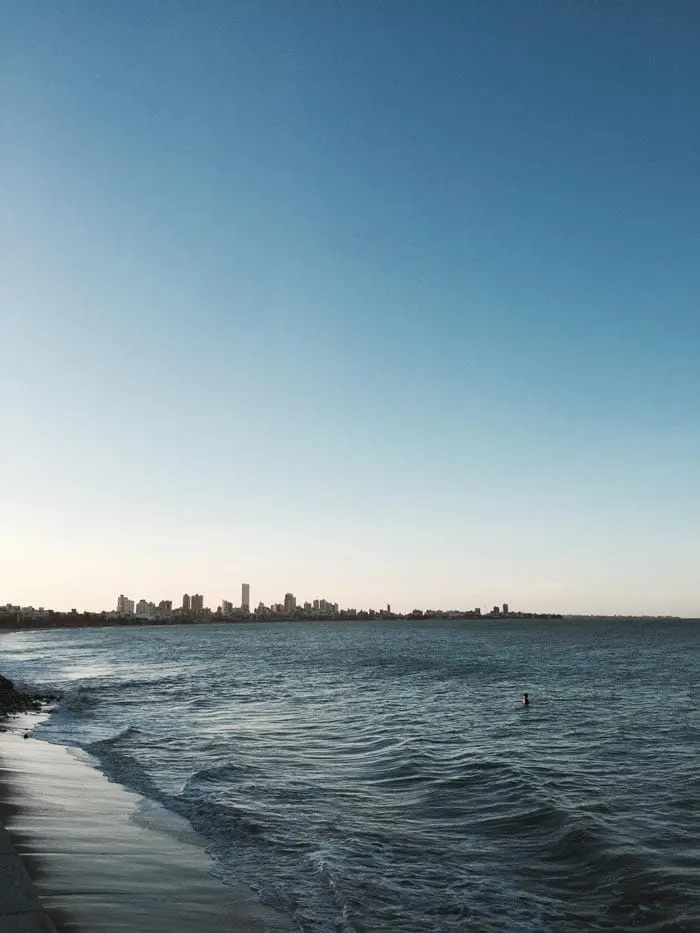
Brasília is not Brazil’s first capital
First things first. Plenty of readers have asked me if Brazil’s capital is Rio de Janeiro, but it’s not.
Well, to comfort you a little bit, know that the city was once the capital of the country.
In fact, Brazil has had three capitals: Salvador, Rio de Janeiro, and the current one, Brasília.
There is a replica of the 14th-century Japanese temple Kinkaku-ji in Brazil
With a massive Japanese community, it doesn’t come as a surprise that São Paulo has a replica of one of Japan’s most significant temples, right?
A little over an hour’s drive from the city center, the town of Itapecerica da Serra is home to a beautiful cinerarium.
This cinerarium is based in the Japanese Kinkaku-ji temple’s replica surrounded by a gorgeous garden. This is a great day trip from SP.
In Kyoto, this temple is covered in gold leaf; hence, the name Kinkaku-ji, which means Golden Pavilion in English.
Brazilian achievements
A high-school student from Pará created a brick made of açai seeds
If you have ever had açai, chances are you probably had açai from Pará.
That’s because 90% of all açai comes from Pará, but only 4% of this Brazilian fruit is used. The rest is waste.
And so much waste was causing an environmental issue in the region.
However, the high school student Francielly Rodrigues Barbosa, 18 years old, developed bricks from açai seeds.
With her project, Francielly helped not only the environment but also the local community. That’s because she created a low-cost alternative for people whose house walls were in bad condition.
A Brazilian agronomist developed a biological process that makes no use of chemical industrialized fertilizers
Brazilian agronomist, Johanna Dobereiner identified specific types of bacterias that helped the nutrition of non-leguminous crop plants through nitrogen fixation in the roots.
Her achievements allowed for less environmental impact and the cheaper production of soybean. Nowadays, Brazil is one of the biggest exporters of soy.

A Brazilian physician discovered Chagas disease
Carlos Chagas, a physician, born in Minas Gerais, discovered in 1909 the Chagas disease, which is named after him.
The disease is more common in rural areas of Latin America.
Here are some other exciting things about Brazil and Brazilians.
- In 1903, Vital Brazil discovered the polyvalent anti-ophitic serum, which is used to treat bites from poisonous snakes.
- In 1932, José Braz Araripe developed the automatic transmission in cars using hydraulic fluid.
- In 1936, Manuel Dias Abreu invented the rapid radiography of the lungs for screening tuberculosis.
- In 1945, brigadeiro.
- In 1959, Therezinha Beatriz Alves invented the rice colander after clogging her sink multiple times.
- In 1972, Andreas Pavel invented the walkman. At the time, it was called a stereo belt.
- In 1978, Marcos dos Mares Guias discovered that genetically engineered, synthetic “human” insulin could be produced using E. coli bacteria.
- In 1996, Carlos Eduardo Lamboglia invented the electronic panel used in soccer games to indicate assisted substitutions.
- In 2000, Aron de Andrade invented an artificial heart which is connected to the natural heart and powered by an electric motor. This is the world’s cheapest artificial heart model, and the only one that doesn’t require the extraction of the organ. It weighs only 700g.
- In 2004, Eduardo Saverin co-founded Facebook.
- In 2010, Michael Krieger co-founded Instagram.
Funny Brazil facts
People of Pomerode Town in the south of Brazil learn a dialect of German at school
There is some stuff about Brazil that lots of Brazilians don’t know, and this information is one of them.
Maybe you don’t know, but loads of Germans immigrated to Santa Catarina and Rio Grande Do Sul in the 20th-century.
And one of the most interesting facts about Brazil is that a few German communities are still living according to their traditions.
And even more mind-blowing is that they speak a dialect of German in Brazil! Can you imagine speaking German in Brazil? Time to plan Oktoberfest in Blumenau then.
The deadliest place on earth is in Brazil
That’s a place you won’t want to visit in Brazil. In fact, no one is allowed to set foot on this island as it’s extremely dangerous.
Whoever wants to visit Queimada Grande Island, also known as Snake Island, must ask for authorization of the Brazilian Navy, take proper instructions, and be accompanied by a doctor, in case of any bites.
Generally, only scientists are allowed into the island.
That’s because, as the name suggests, this island is jam-packed of snakes. I know this is a rather weird fact about Brazil.
Still, to give you a better idea of how dangerous it is, Queimada Grande Island has about 45 venomous snakes per 328 ft (100 m).
Brazil is the country with the most national parks in the Americas
It doesn’t come as a surprise that Brazil is abundant in national parks. The country is massive, after all.
But an interesting Brazil fact is that the country has the most national parks in the whole American continent.
In total, Brazil has 72 national parks scattered throughout its territory, but most of them are in the northern region.
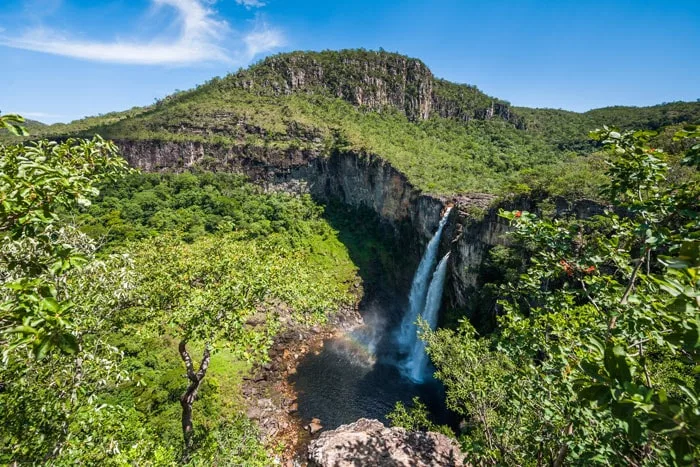
Interesting facts Brazil symbols
São Paulo State’s flag was supposed to be Brazil’s flag
After the country became a republic, people wanted a new flag to represent a new beginning.
Many projects were presented to the authorities at the time. Still, the current flag of São Paulo is one of the best-known rejected projects.
And because of this rejection, the state of São Paulo won a tricolor flag where each color represents the major ethnic groups in Brazil.
The black represents the African slaves who built the country, the white represents the European immigrants, and the red represents the Indigenous people of our lands.
The stars on the Brazilian flag depicts a specific starry night
The starry night on the flag, a national symbol of Brazil, isn’t any ordinary night, but the one of November 15, 1889, as seen from Rio de Janeiro.
On that day, a military coup d’etat established the Republic of Brazil, and an astronomer was asked to draw the sky above their heads and mark that day in history. (And in our flag too.)
The lone star in the flag isn’t the capital, Brasília
Each star on the Brazilian flag represents a state or the capital.
While many people believe the lone star at the top half of the flag is Brasília, the country’s capital, I can tell you that’s a big misconception.
In fact, that star represents Pará, a northern state. At that time, Pará was the northernmost state in Brazil, Amapá and Roraima were created later.
And since each state’s position was chosen according to their location in Brazil, Pará is the lone star.
Food & drink identity information about Brazil
Brazilians eat more rice and beans than feijoada
While feijoada is the national dish of Brazil, most people in the country eat daily rice and beans. Twice to be more precise, once for lunch and another for dinner.
That combination, rice and beans, is easy to prepare. That’s why most households cook it every single day.
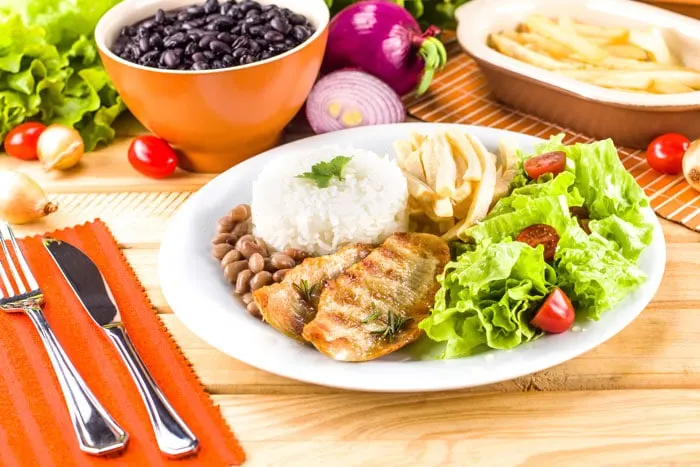
A politician inspired the creation of Brigadeiro
What was a political campaign, became a national dessert.
If you don’t know, brigadeiro is the most consumed Brazilian dessert, and it all started with the presidential elections of 1945.
Back then, one of the candidates, a brigadier, was the favorite among the female voters, so to help his political campaign, many of them cooked desserts to serve at meetings.
As a result of the war, milk was scarce, so Heloísa Nabuco de Oliveira prepared chocolate fudge truffles with sweetened condensed milk instead.
The little balls were a success and spread quickly across the country. And because they didn’t know a better name, they called it brigadeiro (English: brigadier).
Cachaça was the first documented distilled in the Americas
Although there are registers that cachaça was first produced in Pakistan in 500 AC, the Portuguese brought the plant and technique to Brazil in the 16th-century.
The production of this spirit was first documented in 1622 in Brazil, and people loved it so much that, to this day, they still consume it widely all over the country.
Did you know? Cachaça is a distilled spirit made from fermented sugarcane juice.
In fact, this clear liquor is part of our most important cocktail, caipirinha. A refreshing and simple cocktail made with cachaça, sugar, and lime on rocks.
Tip from a local: A must-do in Brazil is to drink caipirinha in a samba bar or at the beach.
And here goes another Brazil fact, this spirit was recognized as a Geographical Indication of the country. That means, the name cachaça can only be used for bottles produced in Brazil.
So if you see a “Brazilian rum” in the liquor store, know that it didn’t come from Brazil.
Facts about Brazilian culture
These are some facts about our customs and traditions, but to get a better sense of our society, read this guide on Brazilian culture.
The color we wear on New Year’s Eve isn’t random
We Brazilians have many quirky and unusual traditions.
Still, my favorite of them all is that we choose a specific color to wear on New Year in Brazil based on our wishes for the upcoming year.
Each color has a different meaning, so most people use a combination of white (for peace) with red (for love) or gold (for money), and so on.
I know this is a fun fact about Brazil, or better put, Brazilians. If you visit the country during that time, you’ll experience it yourself.

Most popular last name in Brazil is Silva
This Brazil fact is also shared with Portugal as the last name Silva is the most common there too.
The variation “da Silva” is in 22nd place, with just over 1 million people in Brazil. But the origin of both “Silva” and “da Silva” are the same: as a toponymic surname (named after a place), it derives from the Latin term silva, which means “jungle” or “forest.”
With the presence of the Romans in the Iberian Peninsula, many Lusitanians incorporated Silva in their own name.
Centuries later, many of them brought the name to Brazil during colonial times, and it became an even larger group after the abolition of slavery.
Brazilians are highly sexually active
It isn’t a surprising fact about Brazil, a country known for its beautiful people, that the population is the world’s second-most sexually active.
Take a stroll in any beach to see many people working out and just sunbathing their trained bodies.
As people who love music, I believe the “warm” beats and lyrics of Brazilian music also play a significant role while flirting.
Facts about slavery in Brazil
Brazil was the country that imported the most African slaves
This disheartening fact about Brazil is still ignored by many people, while many others simply don’t know about it – the country imported by far the most slaves.
It’s estimated that about 12.5 million slaves were sent abroad, and 38.9% of all of them went to Brazil.
That’s somewhere around 4.8 million. Much more than the 2nd place British Caribbean which received about 2.3 million slaves.
Brazil was the last nation in the Americas to abolish slavery
As if having the most significant number of slaves wasn’t enough, Brazil was the last country in the Americas to abolish slavery in 1888.
After all the other countries in the western world and under significant pressure from Europe, Brazil finally abolished such horrific acts in the 19th-century.
Although this was a step toward equal rights for all races, it’s worth mentioning racism didn’t disappear from the country.

Racism and slavery are touchy topics for the upper class in the country
Roughly 9% of the Brazilian population has African ancestry, and 46% is considered interracial, including Indigenous Brazilian, African, and European. We have ethnic groups from many regions worldwide, and we proudly say we’re a multicultural society.
See the slogan of this website, for example—experience diversity.
However, the economic inequality of blacks and mixed-race people in Brazil is alarming.
Many people claim the country is meritocratic and that racism doesn’t exist here; after all, Brazil is so multicultural, how could it be?
The reality isn’t pretty different, unfortunately. And many people, especially the upper classes of our society, simply deny talking about it.
However, more and more folks of all ethnicities feel suppressed by this. As a result, they are bringing up this and other touchy topics in the country, such as misogyny and the macho culture.
Editor’s note: The slogan of this website is “Experience Diversity” because my country is diverse, and I’m not only proud of it but I’m also fighting, together with fellow Brazilians, to make it equal for everybody.
Fun facts about Brazil laws
The flag should always be up-to-date
As said before, the starry night on the Brazilian flag depicts the night on November 15, 1889, the Proclamation of the Republic, and these stars aren’t random.
Each one of them represents a Brazilian state as well as the country’s capital in a specific constellation.
And another Brazil fun fact is that the law imposes the flag should always be up-to-date. That means if a Brazilian state is created or abolished, the stars on the flag should reflect that.
No one can get arrested on the days before an election
Well, almost no one. But this rather absurd Brazilian law that imposes authorities may not arrest or detain any voter starting five days before elections up to 48 hours after the election closing.
The only exceptions to that, so the only cases when a voter can get arrested is when the person is caught in committing a crime or if the person committed one of the following crimes instead:
- Torture
- Drug dealing
- Racism
- Heinous crimes
- Any offense against the state
It’s bizarre, I know. But the reason for this law is that the government wants to avoid unfair arrests caused by opposing parties that might try to frame other people and influence the election results.
Committing an environmental crime on Sundays and holidays is an aggravating factor
It’s common and right to punish crimes against the environment. But the weird fact about Brazil is that committing this kind of crime on Sundays, holidays, or during the night is an aggravating factor.
That’s because inspectors don’t work during those hours and days, and the government wants to discourage people from committing crimes during the period the inspectors don’t work, increasing the chance of getting infractors.
Brazilian statistics
Brazil has about 180 spoken languages
Yes, at least 180 languages. Although Portuguese is the official one, the other languages are spoken mostly by about 160,000 indigenous people.
However, according to the linguist Aryon Rodrigues from the National University of Brasilia (UnB), these languages are treated with extinction since fewer than 10,000 people currently speak them.
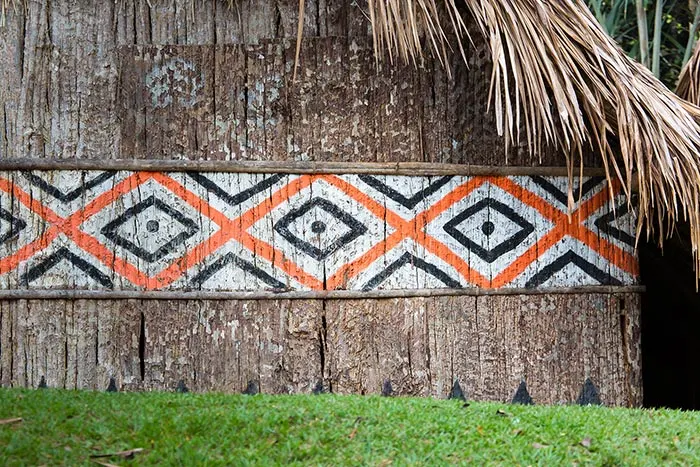
Brazil receives half the number of tourists Berlin does
While Brazil is a large country, there is still a lot to do in terms of increasing awareness about the country and attracting international tourists.
To put it into perspective, Brazil received 6.6 million tourists in 2018, while Berlin received 13.5 million in the same period.
Yes, a capital in Europe receives more tourists than a country with continental proportions.
It’s undeniable that criminality is an issue that the government isn’t very interested in solving. However, when taking necessary precautions and staying in the tourist routes, it’s improbable something will happen to visitors.
Brazil has the largest Japanese community outside of Japan
In 1908, the first Japanese immigrants arrived in Brazil, and since then, it has developed into the most significant ethnic Japanese population outside of their home country.
This is a pretty cool fact about Brazil, considering both cultures are very different from each other.
Nowadays, about 1.5 million Brazilian Japanese live in Brazil.
São Paulo has the highest GDP in the southern hemisphere
Brazil is a country of extremes, and this fact about Brazil only proves my point.
While millions of people in Brazil fight against extreme poverty, São Paulo is among the most important financial and industrial centers in the world and has the highest GDP in the southern hemisphere, let alone Latin America.
Many countries on other continents, including in Europe, have smaller economies than this huge South American city.
São Paulo dictates the pulse of the Brazilian economy as it accounts for over 30% of the country’s GDP.
The city’s GDP was about $530 billion in 2017, while the GDP of Mexico City was about $490 billion in the same period.
Brazil travel resources
I hope you liked this list of Brazil facts. This is an excellent base if you want to learn more about the country.
Naturally, there are many other exciting and fun facts about Brazil, but I selected the main ones, in my opinion.
If you’re planning a trip to Brazil, be sure to check out my travel guides as well as my accommodation recommendations.
Did you like this article about Brazil facts? Then share it with your friends who might also like it.


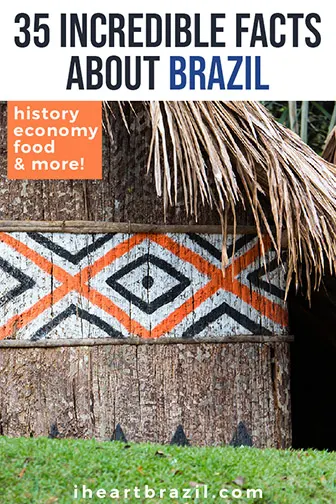
Bruh
Thursday 23rd of November 2023
This website is awesome I'm telling you. Everybody should use this website because it is very useful to people if they are learning about Brazil like me.
Mark Cleborne
Tuesday 6th of December 2022
This was an amazing read. Love it and Let's go Brazil in this year 2022 fifa world cup. They won 4-1 against South Korea.
Fernanda
Friday 5th of August 2022
I am Brazilian love this
Aubrey
Monday 10th of October 2022
@Fernanda, what other attractions are there. Does the restaurant bar have any American type foods.
Saymon
Monday 18th of April 2022
What such detailed facts about Brazil! Thanks for sharing those points. I'm Brazilian and love this country!!
Glad to know foreign people appreciate our culture. Thanks
Joaobatista Monteiro
Thursday 22nd of April 2021
Just amazingly beautiful... I'm in love again with my country... Thanks to you...
Bruna
Thursday 22nd of April 2021
Glad to hear! :)